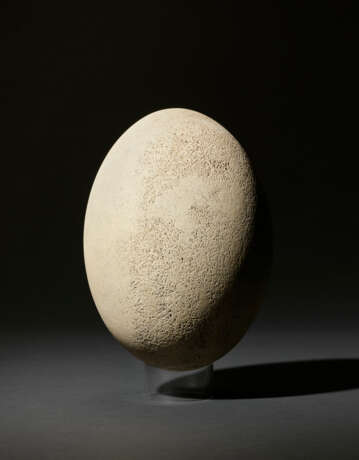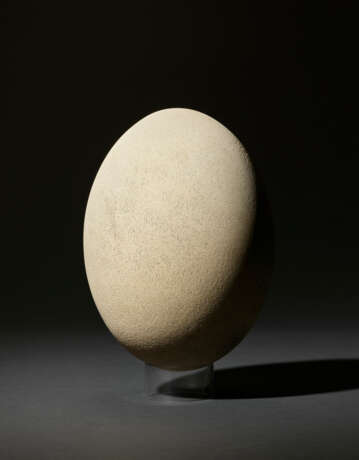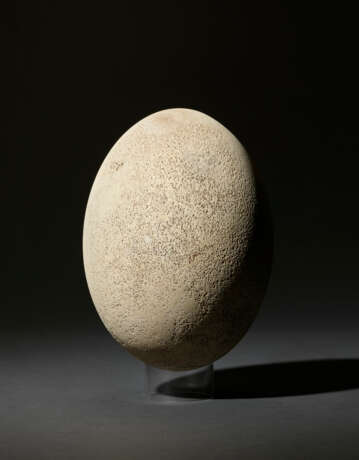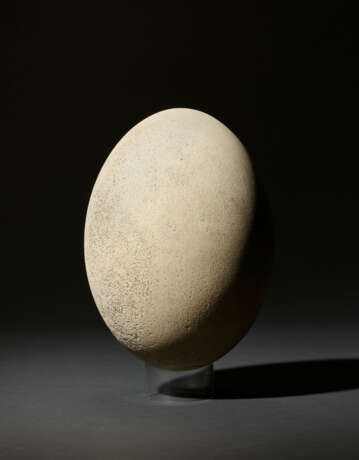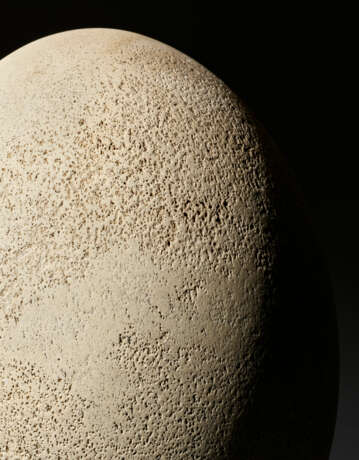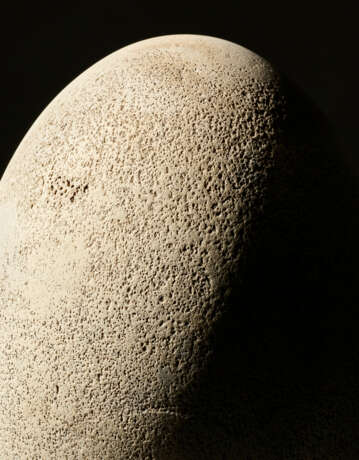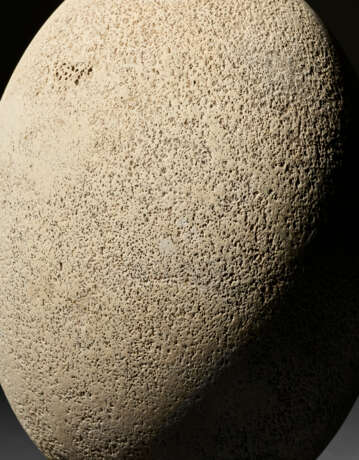ID 1353356
Lot 28 | A Large Elephant Bird Egg
Valeur estimée
£ 30 000 – 50 000
An intact egg of an Aepyornis maximus.
diameter: 9in. (22.5cm.); height: 12in. (30.5cm.)
As far as I knew they were the only eggs that have ever been got out not even cracked. I went afterwards to see the ones at the Natural History Museum in London; all of them were cracked and just stuck together like a mosaic, and bits missing. Mine were perfect. (H.G. Wells, Aepyornis Island)
A fine intact specimen of one of the largest eggs ever laid.
The Elephant Bird, Aepyornis maximus, was an enormous flightless bird native to Madagascar. Standing as high as 10 or 11 feet, and weighing up to 1100lbs, the Elephant Bird was undoubtedly the largest bird ever to have lived. Compared to even the largest modern ostrich (up to 8 feet high and weighing 300lbs) it was far taller and thicker-set with its far more muscular legs. A comparable species in terms of size is the Moa of New Zealand, which are also now extinct. The Elephant Bird roamed the plateaus and forest of Madagascar until their extinction sometime between the 14th and 17th centuries.
In 1894, the Elephant bird made its appearance in a short story by H.G. Wells, Aepyornis Island, serialized in the Pall Mall Gazette. An explorer is sent by a natural history collector to find a specimen of the giant bird. He comes across a group of eggs, but after one break and he becomes marooned on an atoll, the final egg hatches. The bird, 'about fourteen feet high to the bill of him, with a big broad head like the end of a pickaxe', is initially friendly towards the explorer, but eventually turns on him and 'show signs of a nasty temper....'
Perhaps unsurprisingly given their gargantuan size, the Elephant Bird was originally believed to have been the giant flying beast known as the Roc (or Ruhk). This legendary bird of prey is perhaps a distorted version of Aepyornis maximus, immortalised in the tales of Sinbad and accounts of Marco Polo's voyages. In Sanskrit epics the mythic bird Garuda carried a battling elephant in its talons, which is how the species received its colloquial name. Despite this association, the Elephant Bird’s diet instead comprised forest fruits.
The egg of an Elephant Bird is a seldom seen specimen. Rarer still are examples with complete and intact shells like the present lot. Fewer than 50 such eggs populate public collections around the world. One reason for the rarity of these eggs is their culinary appeal for the human settlers of Madagascar. A single Elephant bird egg could easily feed a large group, and as a result they were highly sought after for nourishment: their status as a desirable food source for humans almost certainly contributed to their extinction. These eggs, with their cream or pale hues and gently perforated shells, are not only visually beautiful, but an enduring symbol of a creature revered in both science and legend. This is one of the largest examples we have seen.
| Adresse de l'enchère |
CHRISTIE'S 8 King Street, St. James's SW1Y 6QT London Royaume-Uni | |
|---|---|---|
| Aperçu |
| |
| Téléphone | +44 (0)20 7839 9060 | |
| Commission | see on Website | |
| Conditions d'utilisation | Conditions d'utilisation |
